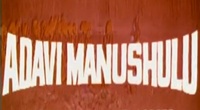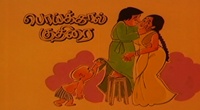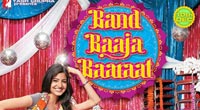Lost Horizon is a 1937 American drama-fantasy film directed by Frank Capra. The screenplay by Robert Riskin is based on the 1933 novel of the same name by James Hilton.
| Lost Horizon | |
|---|---|
Original poster | |
| Directed by | Frank Capra |
| Produced by | Frank Capra |
| Screenplay by | Robert Riskin |
| Based on | Lost Horizon 1933 novel by James Hilton |
| Starring | Ronald Colman Jane Wyatt Sam Jaffe John Howard H.B. Warner |
| Music by | Dimitri Tiomkin |
| Cinematography | Joseph Walker Elmer Dyer |
| Edited by | Gene Havlick Gene Milford |
| Distributed by | Columbia Pictures |
Release date |
|
Running time | 133 minutes 210 minutes (original cut) |
| Country | United States |
| Language | English |
| Budget | $2 million |
The film exceeded its original budget by more than $776,000 and took five years to earn back its cost. The serious financial crisis it created for Columbia Pictures damaged the partnership between Capra and studio head Harry Cohn, as well as the friendship between Capra and Riskin.
In 2016, the film was selected for preservation in the United States National Film Registry by the Library of Congress as being "culturally, historically, or aesthetically significant".
Screenplay
It is 1935. Before returning to England to become the new Foreign Secretary, writer, soldier, and diplomat Robert Conway (Ronald Colman) has one last task in China: to rescue 90 white Westerners in the city of Baskul. He flies out with the last few evacuees, just ahead of armed revolutionaries.
Unbeknownst to the passengers, the pilot has been replaced and their aircraft hijacked. It eventually runs out of fuel and crashes deep in the Himalayan Mountains, killing their abductor. The group is rescued by Chang (H.B. Warner) and his men and taken to Shangri-La, an idyllic valley sheltered from the bitter cold. The contented inhabitants are led by the mysterious High Lama (Sam Jaffe).
Initially anxious to return to civilization, most of the newcomers grow to love Shangri-La, including paleontologist Alexander Lovett (Edward Everett Horton), swindler Henry Barnard (Thomas Mitchell), and bitter, terminally-ill Gloria Stone (Isabel Jewell), who miraculously seems to be recovering. Conway is particularly enchanted, especially when he meets Sondra (Jane Wyatt), who has grown up in Shangri-La. However, Conway's younger brother George (John Howard), and Maria (Margo), another beautiful young woman they find there, are determined to leave.
Conway eventually has an audience with the High Lama and learns that his arrival was no accident. The founder of Shangri-La is said to be two hundred years old, preserved, like the other residents, by the magical properties of the paradise he has created, but is finally dying and needs someone wise and knowledgeable in the ways of the modern world to keep it safe. Having read Conway's writings, Sondra believed he was the one; the Lama had agreed with her and arranged for Conway's abduction. The old man names Conway as his successor and then peacefully passes away.
George refuses to believe the Lama's fantastic story and is supported by Maria. Uncertain and torn between love and loyalty, Conway reluctantly gives in to his brother and they leave, taking Maria with them, despite being warned that she is much older than she appears. After several days of grueling travel, she becomes exhausted and falls face down in the snow. When they turn Maria over, they discover that she had become extremely old and died, as her departure from Shangri-La had restored her to her true age. Horrified, George loses his sanity and jumps to his death. The Sherpa porters accompanying them were earlier swept away by an avalanche, triggered by some of them carelessly firing their handguns.
Conway continues on and eventually ends up in a Chinese mission where a search party is sent to find him. The ordeal has caused him to lose his memory of Shangri-La. On the voyage back to England, he starts remembering everything; he tells his story and then jumps ship. The searchers track him back to the Himalayas, but are unable to follow him any further. Conway manages to return to Shangri-La.
|
Uncredited Cast
|
Frank Capra had read the James Hilton novel while filming It Happened One Night, and he intended to make Lost Horizon his next project. When Ronald Colman, his first and only choice for the role of Robert Conway, proved to be unavailable, Capra decided to wait and made Mr. Deeds Goes to Town (1936) instead.
Harry Cohn authorized a budget of $1.25 million for the film, the largest amount ever allocated to a project up to that time. According to a 1986 Variety interview with Frank Capra, Jr., his father had wanted to shoot the film in color, but because the only suitable stock footage he intended to incorporate into the film, such as scenes from a documentary about the Himalayas, was in black and white, he was forced to change his plans. In 1985, Capra, Sr. claimed the decision to film in black and white was made because three-strip Technicolor was new and fairly expensive, and the studio was unwilling to increase the film's budget so he could utilize it.
Another issue was that of casting the part of the High Lama. After a screen test of 56-year-old retired stage actor A.E. Anson, Capra decided that he was just right for the part. He made a call to the actor's home, and the housekeeper who answered the phone was told to relay the message to Anson that the part was his. Not long after, the housekeeper called back telling Capra that when Anson heard the news, he had a heart attack and died. Subsequently, Capra offered the part to 58-year-old Henry B. Walthall. He died before shooting began. Finally, to play it safer age-wise, Capra cast Sam Jaffe who was just 45.
From the beginning, Capra ran into difficulties that resulted in serious cost overruns. Principal photography began on March 23, 1936, and by the time it was completed on July 17, the director had spent $1.6 million. Contributing to the added expenses was the filming of snow scenes and aircraft interiors at the Los Angeles Ice and Cold Storage Warehouse, where the low temperature affected the equipment and caused lengthy delays. The Streamline Moderne sets representing Shangri-La, designed by Stephen Goosson, had been constructed adjacent to Hollywood Way, a busy thoroughfare by day, which necessitated filming at night and heavily added to overtime expenses. Many exteriors were filmed on location in Palm Springs, Lucerne Valley, the Ojai Valley, the Mojave Desert, the Sierra Nevada Mountains, and in what is now Westlake Village, adding the cost of transporting cast, crew, and equipment to the swelling budget.
Capra also used multiple cameras to cover every scene from several angles, and by the time shooting ended, he had used 1.1 million feet of film. For one scene lasting four minutes, he shot 6,000 feet, the equivalent of one hour of screen time. He spent six days filming Sam Jaffe performing the High Lama's monologues, then reshot the scenes twice, once with Walter Connolly because it was felt Jaffe's makeup was unconvincing and he looked too young for the role. A total of 40 minutes of footage featuring the High Lama eventually was trimmed to the 12 that appeared in the final cut. Filming took one hundred days, 34 more than scheduled. The film's final cost, including prints and promotional advertising, was $2,626,620, and it remained in the red until it was reissued in 1942.
The first cut of the film was six hours long. The studio considered releasing it in two parts, but eventually decided the idea was impractical. Working with editors Gene Havlick and Gene Milford, Capra managed to trim the running time to 3?1?2 hours for the first preview in Santa Barbara on November 22, 1936. Following a showing of the screwball comedy Theodora Goes Wild, the audience was not receptive to a drama of epic length. Many walked out, and those who remained laughed at sequences intended to be serious. The feedback was mostly negative, and Capra was so distraught, he fled to Lake Arrowhead and remained in seclusion there for several days. He later claimed he burned the first two reels of the film, an account disputed by Milford, who noted setting the nitrate film on fire would have created a devastating explosion.
Following the disastrous preview, Capra made extensive cuts and, on January 12, 1937, reshot scenes involving the High Lama written by Sidney Buchman, who declined screen credit for his work. The new footage placed more emphasis on the growing desperation of the world situation at the time. Still unhappy with the film's length, Harry Cohn intervened; he cancelled the February 1 opening and edited the film himself. When it premiered in San Francisco on March 2, it was 132 minutes long. During the film's initial release in selected cities, it was a roadshow attraction, with only two presentations per day and tickets sold on a reserved-seat basis. Because the box-office returns were so low, the studio head deleted an additional 14 minutes before the film went into general release the following September. Due primarily to the cuts made without his approval, Capra later filed a lawsuit against Columbia, citing "contractual disagreements," among them, the studio's refusal to pay him a $100,000 semi-annual salary payment due him. A settlement was reached on November 27, 1937, with Capra collecting his money and being relieved of the obligation of making one of the five films required by his contract. In 1985, the director claimed Cohn, whom he described as the "Jewish producer," trimmed the film simply so theaters could have more daily showings and increase the film's chance of turning a profit.
Frank S. Nugent of The New York Times called it, "a grand adventure film, magnificently staged, beautifully photographed, and capitally played." He continued,
here is no denying the opulence of the production, the impressiveness of the sets, the richness of the costuming, the satisfying attention to large and small detail which makes Hollywood at its best such a generous entertainer. We can deride the screen in its lesser moods, but when the West Coast impresarios decide to shoot the works the resulting pyrotechnics bathe us in a warm and cheerful glow. The penultimate scenes are as vivid, swift, and brilliantly achieved as the first. Only the conclusion itself is somehow disappointing. But perhaps that is inescapable, for there can be no truly satisfying end to any fantasy. Mr. Capra was guilty of a few directorial clichés, but otherwise it was a perfect job. Unquestionably the picture has the best photography and sets of the year. By all means it is worth seeing.
Nugent later named it one of the 10 best films of the year.
The Hollywood Reporter called it "an artistic tour de force ... in all ways, a triumph for Frank Capra." Variety called it a "sterling" adaptation of Hilton's novel that "can take its place with the best prestige pictures of the industry." Film Daily declared it an "Impressive and artistic drama" and "distinctly a worthwhile contribution to the industry."
Less enthusiastic was Otis Ferguson, who in his review for National Board of Review Magazine observed, "This film was made with obvious care and expense, but it will be notable in the future only as the first wrong step in a career that till now has been a denial of the very tendencies in pictures which this film represents." John Mosher of The New Yorker praised the "beautiful flying scenes" and the "wild and terrifying bits of struggle on mountain peaks and crags," but found the adaptation in general to be "somewhat longish and wearisome on the screen. I thought the old lama would go on talking forever." Joseph McBride in a later biography notes that Capra's emphasis on theme rather than people was evident in the film; he also considered the film a financial "debacle".
In The Spectator, Graham Greene agreed with the less enthusiastic American reviewers. "Nothing reveals men's characters more than their Utopias ... this Utopia closely resembles a film star's luxurious estate on Beverley Hills: flirtatious pursuits through grape arbours, splashings and divings in blossomy pools under improbable waterfalls, and rich and enormous meals ... something incurably American: a kind of aerated idealism ('We have one simple rule, Kindness') and, of course, a girl (Miss Jane Wyatt, one of the dumber stars), who has read all the best books (this one included) and has the coy comradely manner of a not too advanced schoolmistress". For Greene, the film is "very long" and "very dull ... as soon as the opening scenes are over". He also regretted the film's missed opportunities: "If the long, dull ethical sequences had been cut to the bone there would have been plenty of room for the real story: the shock of Western crudity and injustice on a man returned from a more gentle and beautiful way of life".
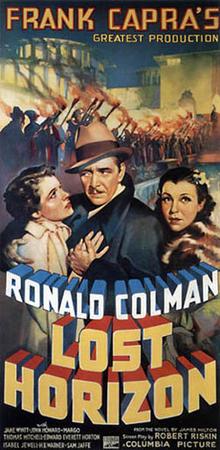 Story of movie Lost Horizon 1937 Film :
Story of movie Lost Horizon 1937 Film : 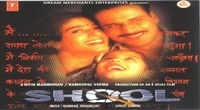
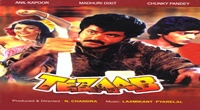
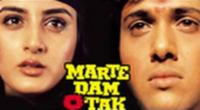

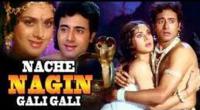
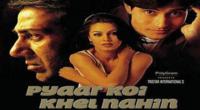
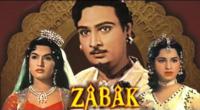
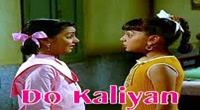
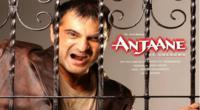
.jpg)
.jpg)
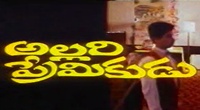
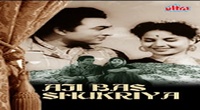
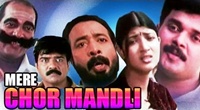
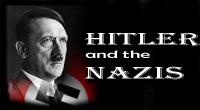
.jpg)


